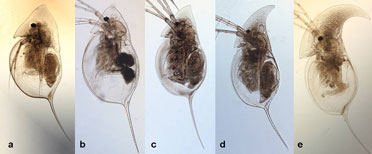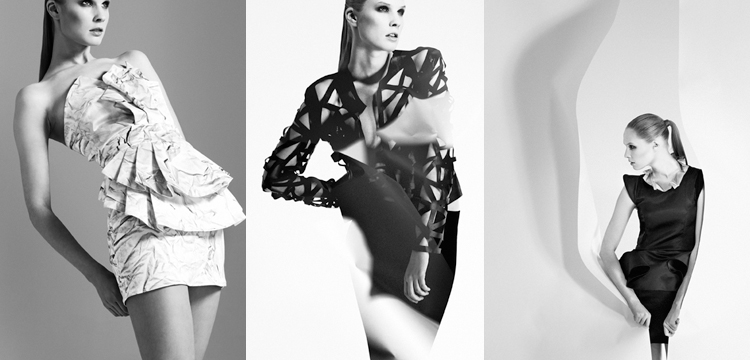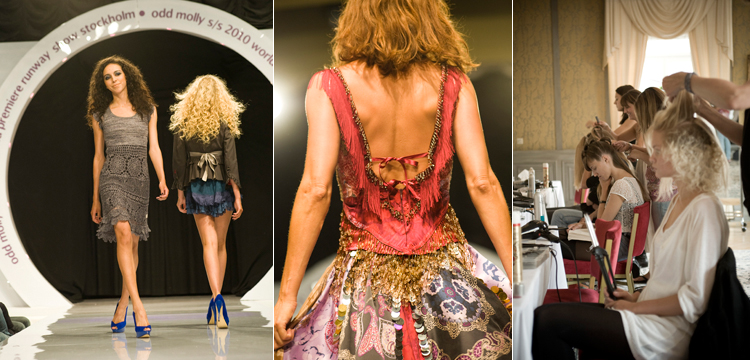Fleas' fashions. (Yes, fleas...)
For sure one of the world's trendiest crustaceans where only the ladies dress up in summer attire. (See a pattern here?)
-
 Photographs of five female Daphnia cristata water fleas, from five different lakes, show different sizes and styles of caps. Notably, offspring with "a" and "d" have the same shaped caps as their mothers.
Photographs of five female Daphnia cristata water fleas, from five different lakes, show different sizes and styles of caps. Notably, offspring with "a" and "d" have the same shaped caps as their mothers. -
-
Women steer the fashion industry because females change the way they look each season, and to trace the evolution of this behavior, researchers at the University of Gothenburg have been studying trends for water fleas. They have found some answers.
-
 Hans Lord, researcher
Hans Lord, researcher -
-
One of the world's trendiest crustaceans, water fleas have the ability to change their appearance to suit their surroundings and the season. This may involve, for example, donning new accessories, and these include growing long antennae, a larger back hump or a new "cap" of varying sizes. Studies of water fleas in the Örekilsälven river basin (north of Gothenburg along Sweden's west coast) reveal that these accessories constitute the water fleas' manner of reducing the risk of being caught and eaten.
-
 Noir et Blanc at Stockholm Fashion Week, 2010.
Noir et Blanc at Stockholm Fashion Week, 2010. -
Remarkably, water fleas in different lakes follow different fashion trends. Higher in the Örekilsälven water system, females wear small round caps combined with fairly large bodies, while their counterparts further downstream sport larger caps with slimmer figures.
-
 Odd Molly at Fashion Week by Berns, 2010. Photo: Linus Hallsenius
Odd Molly at Fashion Week by Berns, 2010. Photo: Linus Hallsenius -
Hans Lord, researcher at the Department of Zoology, explains that a large cap protects the water fleas from small invertebrate predators. The other fashion of smaller bodies avoid predatory fish. A stylish combination of a small body and a large cap protects them from both.
-
Fashionable styling is more extravagant in the summer than winter. "When the water's cold, it's more difficult to move through, which makes it extra hard to swim with accessories," says Lord.
-
The males, on the other hand, don't seem at all bothered by trends.
-
One theory entails that females carry the offspring, and her loss of life has greater consequences than a dead male. Another view is that males want to swim fast, mate furiously and get on down the road as quickly as possible.
-
Source: Department of Zoology, University of Gothenburg
-
-
